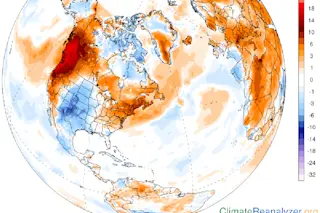If you didn't know, it is hot in North America right now. Really hot. Like melting-cables hot. The Pacific Northwest and Canada have been the hottest they have ever been. Cities that are used to summer temperatures reaching close to 90°F (32°C) are feeling temperatures over 110°F (43°C). It is all part of the changing climate on our planet, and although it isn't the hottest temperatures ever recorded on Earth, this heat is covering a remarkable swath of the planet.
Now, the surface temperature of planets and moons is really controlled by three things. The first is the amount of solar radiation (called insolation) it receives, which is more or less dictated by the distance from our Sun. Closer to the sun, hotter you might be.
Second is albedo, or the reflectivity of the object's surface. Most rocky planets are made of dark rock that absorbs a lot of the ...














